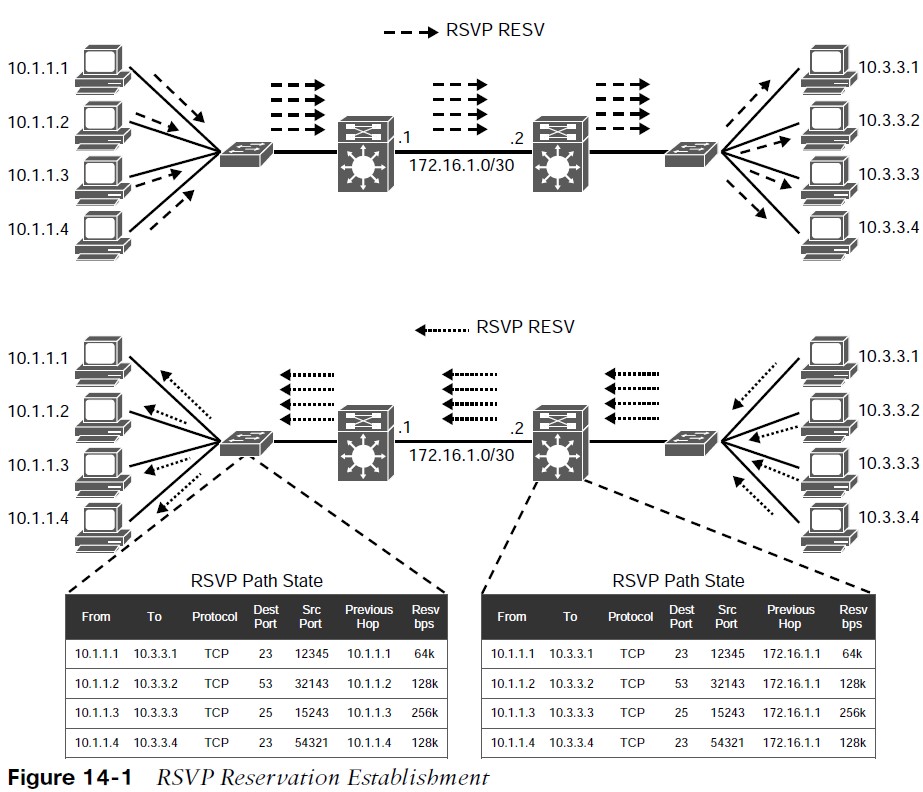
About Lesson
QoS Models
Three different models available for implementing QoS in a network: best effort, Integrated Services (IntServ), and Differentiated Services (DiffServ).
Three different QoS implementation models:
- Best effort – QoS is not enabled for this model. It is used for traffic that does not require any special treatment.
- Integrated Services (IntServ) – Applications signal the network to make a bandwidth reservation and to indicate that they require special QoS treatment.
- Differentiated Services (DiffServ) – The network identifies classes that require special QoS treatment.
IntServ Model
IntServ was created for real-time applications such as voice and video that require bandwidth, delay, and packet-loss guarantees to ensure both predictable and guaranteed service levels. The network reserves the end-to-end resources (such as bandwidth) the application requires to provide an acceptable user experience.
- Resource Reservation Protocol (RSVP):
- Used to reserve resources throughout a network
- Provides call admission control (CAC) to guarantee that no other IP traffic can use the reserved bandwidth
- Any bandwidth reserved and not used is wasted
- End-to-end QoS requires all nodes, including the endpoints running the applications, to support, build, and maintain RSVP path state for every single flow.
- Intserv does not scale well on large networks that might have thousands or millions of flows due to the large number of RSVP flows that would need to be maintained.
RSVP Reservation
- Hosts on the left side (senders) are attempting to establish a one-toone bandwidth reservation to each of the hosts on the right side (receivers).
- The senders start by sending RSVP PATH messages to the receivers.
- RSVP PATH messages carry the receiver source address, the destination address, and the bandwidth they wish to reserve.
- This information is stored in the RSVP path state of each node.
RSVP Reservation
- Once the RSVP PATH messages reach the receivers, each receiver sends RSVP reservation request (RESV) messages in the reverse path of the data flow toward the receivers, hop-by-hop.
- At each hop, the IP destination address of a RESV message is the IP of the previous-hop node, obtained from the RSVP path state of each node.
- As RSVP RESV messages cross each hop, they reserve bandwidth on each of the links for the traffic flowing from the receiver hosts to the sender hosts.

DiffServ Model
DiffServ addresses the limitations of the best-effort and IntServ models.
- There is no need for a signaling protocol.
- It is highly scalable since there is no RSVP flow state to maintain.
- QoS characteristics (such as bandwidth and delay) are managed on a hop-by-hop basis.
- QoS policies are defined independently at each device in the network.
- DiffServ is not considered an end-to-end QoS solution because end-to-end QoS guarantees cannot be enforced.
- DiffServ divides IP traffic into classes and marks it based on business requirements.
- Each of the classes can be assigned a different level of service.
- Each of the network devices identifies the packet class by its marking and services the packets according to this class.
Other useful information:
Join the conversation